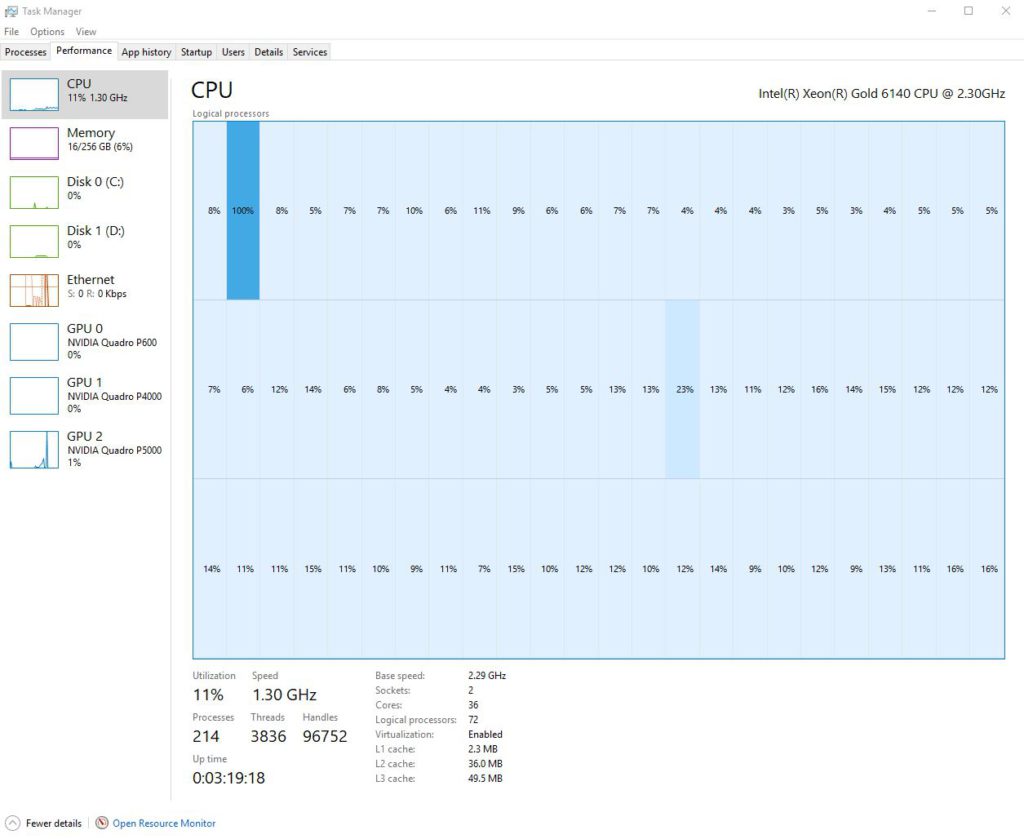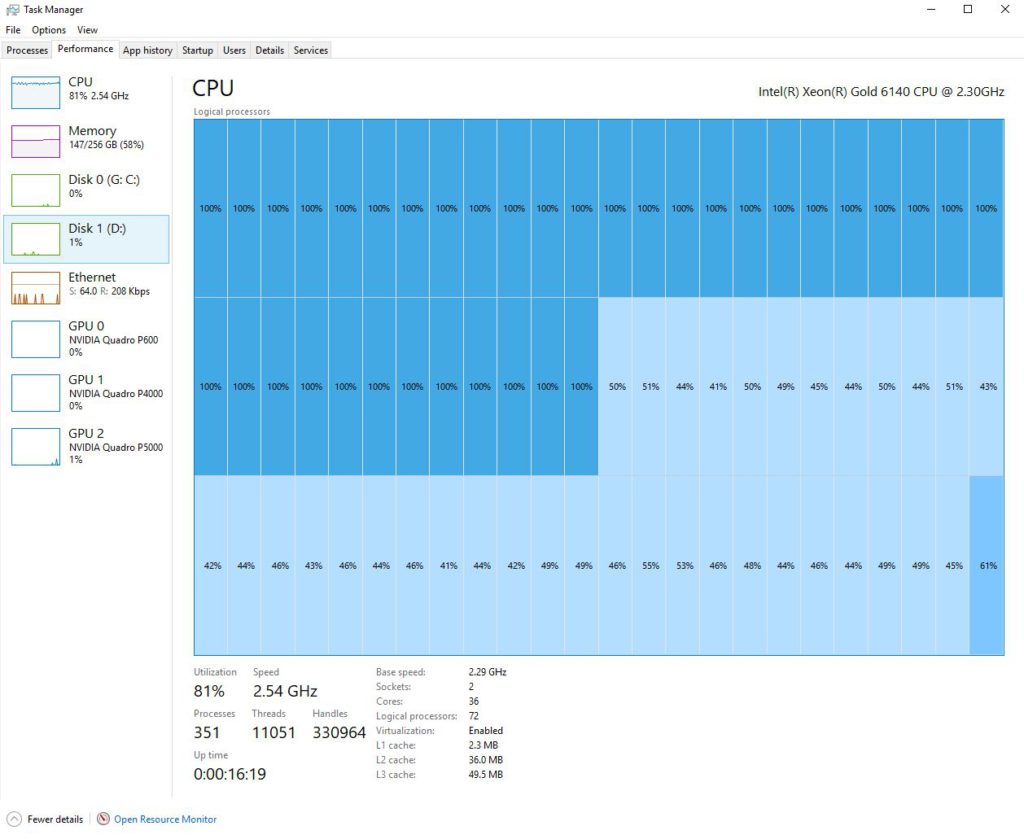The Problem.
If you have a heavy, or long AE project, rendering is likely a gigantic bottleneck for you. This can be such a hindrance that you have probably considered giving up AE to try something else. Same here. But the thing is, I do really enjoy using AE and I don't want to throw it out for another tool. I just wish it would naturally evolve with production needs and hardware. In this case, it took involvement from a third party to get it there, but at least there is a way to improve render performance.

I have a monster workstation... 72 core Xeon Gold, 256GB Ram, Pro SSD drives and two super high end graphics cards. After Effects should soar to real time with these specs. It does not.... Not even close. In fact, rendering only uses 1/72nd of my computing power. The above image shows how poorly After Effects utilizes available power.... legitimately ridiculous.
For the record, I'd like to say that the need to even have to buy this tool is immensely frustrating. There is no excuse from Adobe to not address the needs of its users. The multi-threaded feature request has one of the highest ranks in their software forums, and has not a single response from Adobe.
If you read this thread, you'll understand why AE users are leaving Adobe for other solutions.
It is clear to their users that they are abandoning the notion of improvement and instead throwing money at "new things" nobody even asks for (I.E. Premiere Rush). I suppose naive investors think this looks good, but it's base is pretty agitated, myself included. Frankly, by version 16, it should be node based and real time.
The Solution.

RenderGarden by Mekajiki is essentially a bit of a hacked together solution to achieve what you want. In a round about way, enables AE to use tons more computing power per-render. I say that because it is not a normal simplified process that you are used to. In short, it uses python to fire off and keep track of lots of command line instances of AERender.exe. It can also take advantage of networked machines to help carry the load. I won't get into basics of setup or all that because they have a healthy FAQ for that. Instead I'll show how much it can help in a real world situation.
RenderGarden uses the concept of Seeds and Gardeners. In short, it divides a composition into sections (the seeds) and sends those sections out to be rendered separately with command line instances of AERender.exe (the gardeners). It then automatically uses FFMPEG to put all the bits back together for you.
The way it works reminds me of how I used to split up huge renders into slivers to send to a farm. I would get all the slivers back and put them back together. Fortunately, RG does this for you, it'll even compress to an MP4 after assembly if you wish. This is not as straight forward as a normal render, but is totally worth the effort to get working since you only have to do setup once.

Above you can see a healthy use of my cores. This shows use of 18 Gardeners. I started getting errors if i used more and couldn't seem to successfully troubleshoot the issue but I have a suspicion it is due to hyper-threading. Oddly, the 18 gardeners used half my cores to full capacity (36). I wonder if it is unaware of my second processor? If anyone knows... leave a comment!
Another amazing thing really is that I could still work in 3D Max while this was running and i didn't notice a performance hit at all.
A Worthy Return on Investment:
- Color Corrected & Stabilized Frames Rendered: 55,954
- Time Per frame: 1-3 seconds
- Standard AE Render: ~18 Hours
- RenderGarden: 3 Hours 10 Minutes!!!
Conclusion
For anything that takes longer under an hour, I use regular AE, but for everything else I throw RG at it. It's a little different, and a little weird to setup, but completely worth the effort to figure out. Time is valuable, so if you use AE at all, go spend $99 and save yourself some time.

No Comments.